‘Millions of lives at stake’ if California can’t save earthquake alert system from Trump’s cuts, GOP lawmaker warns

Rep. Ken Calvert (R-Corona), speaking on June 8, said California is counting on the federal government to make an earthquake early warning system operational.
In this hyper-partisan era, there may be one issue that unites California Democrats and Republicans: Earthquakes.
Elected officials from both parties have supported an earthquake early warning system for the West Coast that, after years of work, was scheduled to begin its first limited public operation next year.
But President Trump’s budget proposal calls for cuts that experts say would kill the warning network.
The next few months will determine whether officials on both sides of the aisle can come together to save it. One of the system’s biggest proponents is a Republican congressman who has an influential role in shaping the budget of the U.S. Geological Survey. The district of Rep. Ken Calvert (R-Corona) lies on top of the San Jacinto fault, one of California’s most active.
Calvert has been joined by Democrats and Republicans across the West Coast urging a reversal of the funding cuts. Twenty-eight California state legislators, including the Republican and Democratic leaders of the Senate and Assembly, signed a letter to Calvert urging that Congress reject Trump’s proposal to end federal funding.
It remains uncertain whether they can succeed in a Republican-controlled Congress that doesn’t necessarily have much love for blue-leaning California and the West Coast.
But there is also this political and geologic reality: Most Californians live near an earthquake fault, and earthquake faults in California run through congressional districts represented by both Democrats and Republicans.
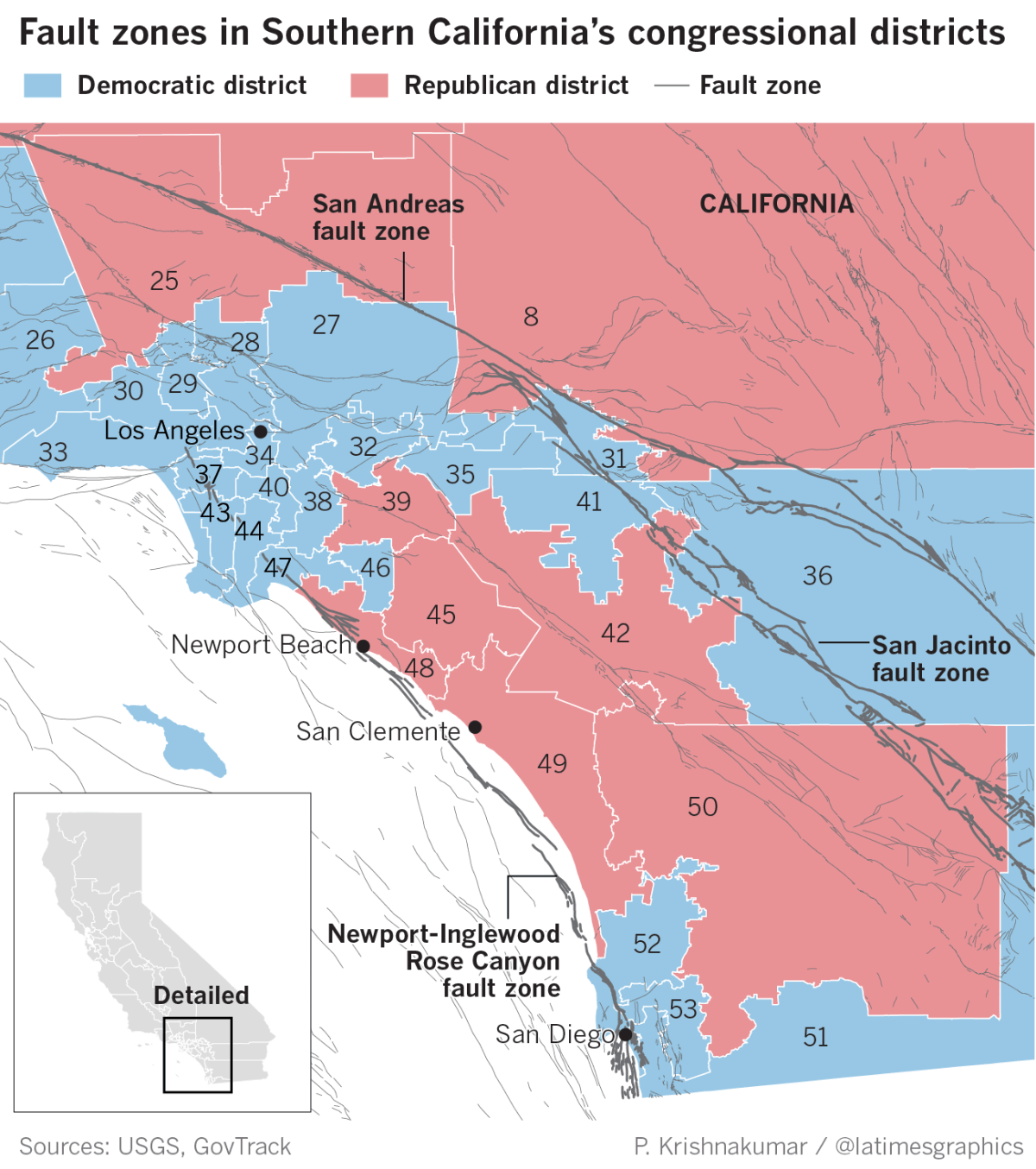
Southern California congressional districts
| Congressional district | Representative | Party |
|---|---|---|
| Congressional district8 | Representative | PartyRepublican |
| Congressional District25 | Representative | PartyRepublican |
| Congressional District26 | Representative | PartyDemocrat |
| Congressional District27 | PartyDemocrat | |
| Congressional District28 | RepresentativeAdam Schiff | PartyDemocrat |
| Congressional District29 | RepresentativeTony Cárdenas | PartyDemocrat |
| Congressional District30 | Representative | PartyDemocrat |
| Congressional District31 | RepresentativePete Aguilar | PartyDemocrat |
| Congressional District32 | Representative | PartyDemocrat |
| Congressional District33 | RepresentativeTed Lieu | PartyDemocrat |
| Congressional District34 | RepresentativeJimmy Gomez (Incoming) | PartyDemocrat |
| Congressional District35 | Representative | PartyDemocrat |
| Congressional District36 | Representative | PartyDemocrat |
| Congressional District37 | Representative | PartyDemocrat |
| Congressional District38 | RepresentativeLinda Sánchez | PartyDemocrat |
| Congressional District39 | Representative | PartyRepublican |
| Congressional District40 | RepresentativeLucille Roybal-Allard | PartyDemocrat |
| Congressional District41 | Representative | PartyDemocrat |
| Congressional District42 | RepresentativeKen Calvert | PartyRepublican |
| Congressional District43 | Representative | PartyDemocrat |
| Congressional District44 | RepresentativeNanette Barragán | PartyDemocrat |
| Congressional District45 | Representative | PartyRepublican |
| Congressional District46 | RepresentativeLuis Correa | PartyDemocrat |
| Congressional District47 | Representative | PartyDemocrat |
| Congressional District48 | Representative | PartyRepublican |
| Congressional District49 | RepresentativeDarrell Issa | PartyRepublican |
| Congressional District50 | RepresentativeDuncan Hunter | PartyRepublican |
| Congressional District51 | RepresentativeJuan Vargas | PartyDemocrat |
| Congressional District52 | RepresentativeScott Peters | PartyDemocrat |
| Congressional District53 | Representative | PartyDemocrat |
Key Republican voices strong support
In Washington, both Republican and Democratic members of Congress gave Ryan Zinke, secretary of the Interior, an earful at a hearing about the proposal to end the U.S. Geological Survey’s participation in the early warning system for the next budget year.
Congress allocated $10.2 million for the system for the current budget year. Trump’s budget for the next budget year proposes nothing.
Officials estimate it will cost $16.5 million a year to operate and maintain the system.
‘I live pretty close to a fault’
“This is a public warning program that will protect millions of lives and critical infrastructure,” Calvert, chairman of the House Appropriations Subcommittee on issues related to the Department of the Interior, told Zinke. “We’ve obviously spent a substantial amount of money into that program. California is very concerned about this. And I am, too. I live pretty close to a fault myself, so I certainly care about what we’re going to do on that.”
Scientists suspect that a joint rupture of the San Jacinto fault — the one underneath Calvert’s district — and San Andreas fault in 1812 triggered a magnitude 7.5 earthquake that destroyed Mission San Juan Capistrano’s Great Stone Church, killing more than 40 people attending Mass.
Democrats on the subcommittee were also critical. “It’s irresponsible,” said Rep. Betty McCollum (D-Minn.), the panel’s ranking Democrat. “The budget is unacceptable and I expect my colleagues on both sides of the aisle to reject it.”
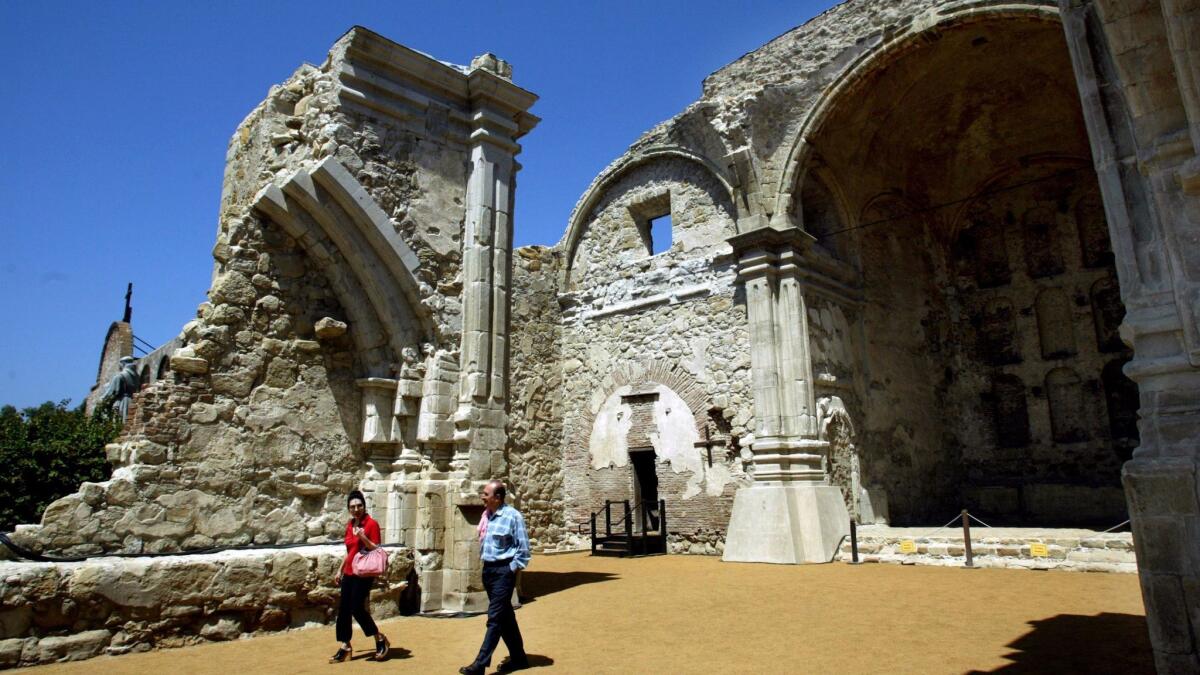
Critical seconds or minutes of warning
Rep. Derek Kilmer (D-Wash.) said early warnings are essential to protect his home state. Washington was part of a broad swath of the West Coast in 1700 that was inundated by a catastrophic tsunami after a magnitude 9.0 earthquake hit the Cascadia fault system in the Pacific Ocean, paralleling Northern California to Vancouver Island.
It was so powerful, entire sections of the Pacific coastline dropped by as much as 5 feet, allowing the ocean to rush in and leave behind dead trees by the shore; Native American stories told of “how the prairie became ocean,” and how canoes were flung into trees. The tsunami was so powerful that the Japanese have records of the destructive waves destroying homes and rice paddies along that nation’s east coast.
Early warning of an incoming earthquake and tsunami would save lives and give people more time to evacuate, such as for elementary school children to climb up to vertical evacuation centers high enough to avoid a tsunami.
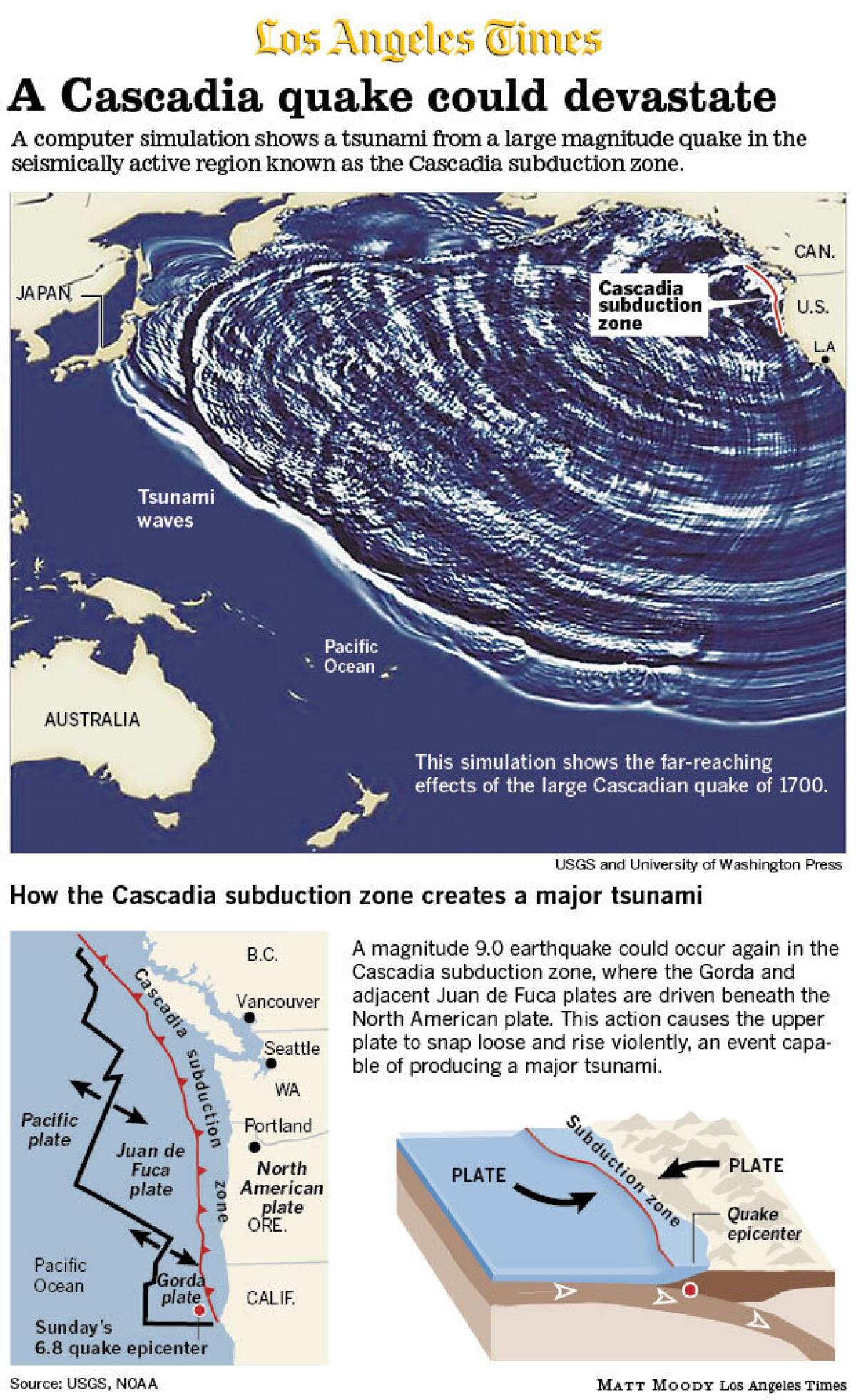
‘Millions of lives at stake’
“I honestly don’t know how to explain to my constituents why the president’s budget zeroes this out,” Kilmer said. “There are literally millions of lives at stake.”
In his response, Zinke, who earned a geology degree from the University of Oregon, said the proposed budget made some tough choices and focused on core services. But he added that he understood the system’s importance, and noted that his alma mater’s president talked to him about the system as well.
“Obviously, you have the last say on it,” Zinke told lawmakers of the final budget. “I’m glad to work with you on it.”
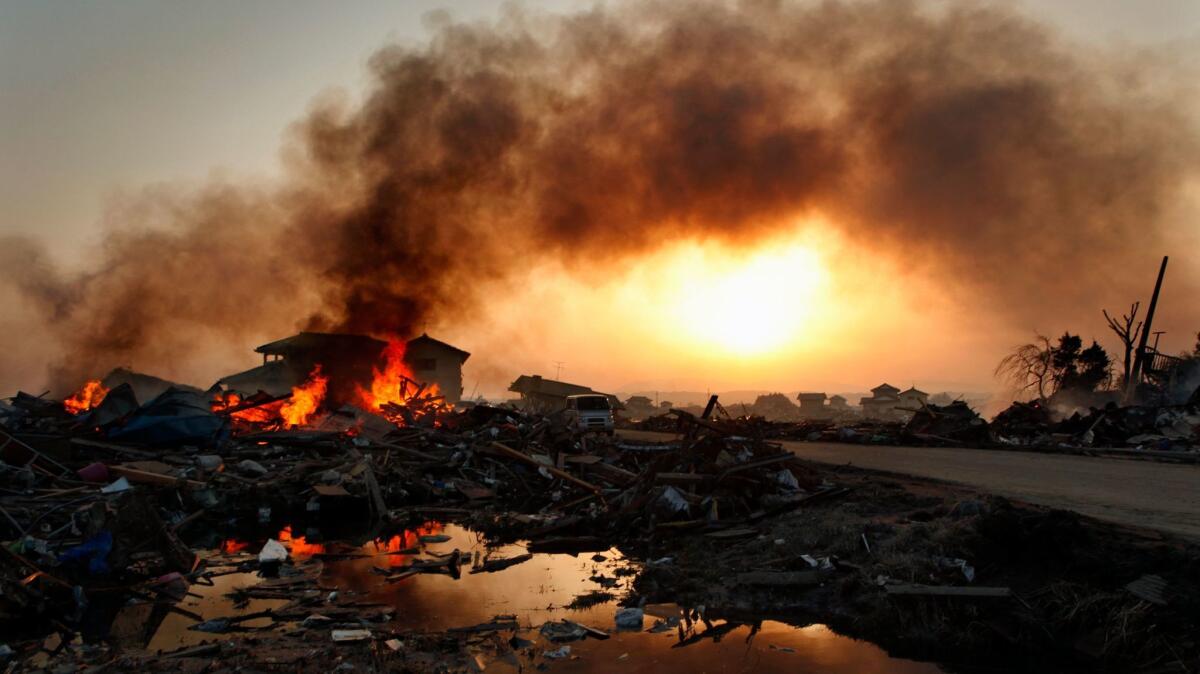
In a subsequent interview, Kilmer said he hoped the show of support would make a difference.
“I was pleased to see bipartisan concern raised about that funding,” Kilmer said.
‘I want us to be integrating every new building into the system’
If federal funding is maintained, plans are underway for the U.S. Geological Survey to roll out the earthquake early warning system to the public in Los Angeles through smartphone apps by next year, as Southern California has the highest concentration of seismic sensors in the ground on the West Coast.
At an earthquake safety event at the Getty House this month, Los Angeles Mayor Eric Garcetti imagined a day when alerts could be pumped into buildings through Internet-connected devices, like smart TVs, Amazon Echo, Google Home, or Apple’s Siri. The city has also been working with technology companies and phone carriers to get the alerts out to people as quickly as possible.
“I want us to be integrating every new building into the system,” Garcetti said. And someday, he’d like the warnings to pop up on phones without people needing to even download an app, in the manner Amber Alerts are done.
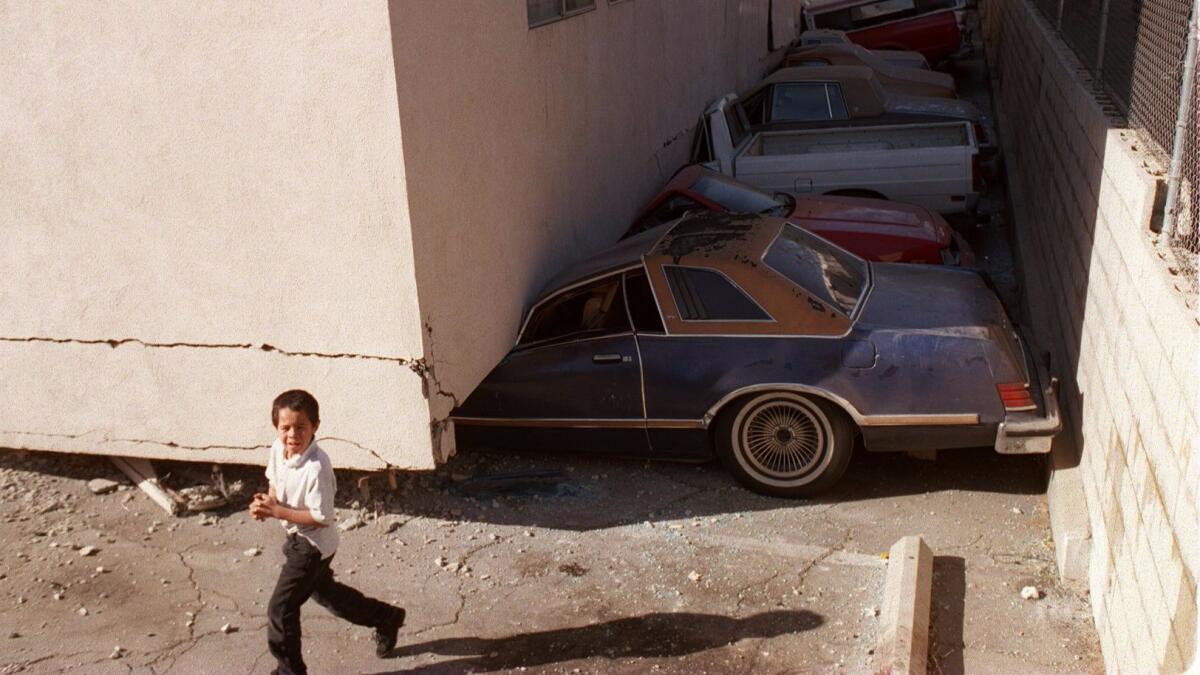
Preparing for the rollout
But with federal funding still uncertain, Garcetti urged the public to “please, get on the phone with your members of Congress.”
“Public safety is a nonpartisan issue, and should never be politicized,” added Jeff Gorell, Garcetti’s deputy mayor for homeland security and public safety, who is a Republican and former state assemblyman. “The consequences of stopping or stymieing progress could not be any more dire.”
Gorell said the goal over the next year and a half is to ensure that a functional smartphone app is available and servers are available “robust enough to eventually get this into every smartphone and every classroom in the city of Los Angeles.”
More Los Angeles classrooms could be given the warning system initially, followed by a rollout to home technology devices that are linked to the Internet, before a wider distribution of the system is executed.
Preventing out-of-control fires
Early warnings, combined with efforts to retrofit seismically vulnerable apartments and commercial buildings, would dramatically help California weather big earthquakes, experts say. Seismologist Lucy Jones said the warnings could be used to automatically shut off systems that would otherwise contribute to fires that would grow out of control.
“That might make the difference of whether or not we topple over a tipping point where we can’t control the fires at all,” Jones said. “All of these things are incredibly important, and we’ve got to do them together. And when we do it, we’re going to reduce the fear level. Because if you know you can make yourself safer, that’s a better way of taking control.”
The system works on a simple principle: The shaking from an earthquake travels at the speed of sound through rock — slower than the speed of today's communications systems. That means it would take more than a minute for, say, a magnitude 7.8 earthquake that starts at the Salton Sea to shake up Los Angeles, 150 miles away, traveling on the state's longest fault, the San Andreas.
Countries around the world have implemented earthquake early warning systems, including Mexico and Japan.
The West Coast’s prototype system has had some early successes. When a magnitude 6 earthquake hit Napa in 2014, the system gave researchers in San Francisco about eight seconds of warning before shaking began.
USGS research geophysicist Ken Hudnut said it’s only a matter of time before a major earthquake hits, something so large that nothing like it has been seen in hundreds of years.
“The Big One is coming,” Hudnut said. “The threat of a Big One on the southern San Andreas fault — the Coachella segment, where they have the big concerts down near Palm Springs — that threat is especially real.”
There, the average time between big earthquakes is about every 150 years, Hudnut said.
But it has been 300 years since the last major earthquake there.
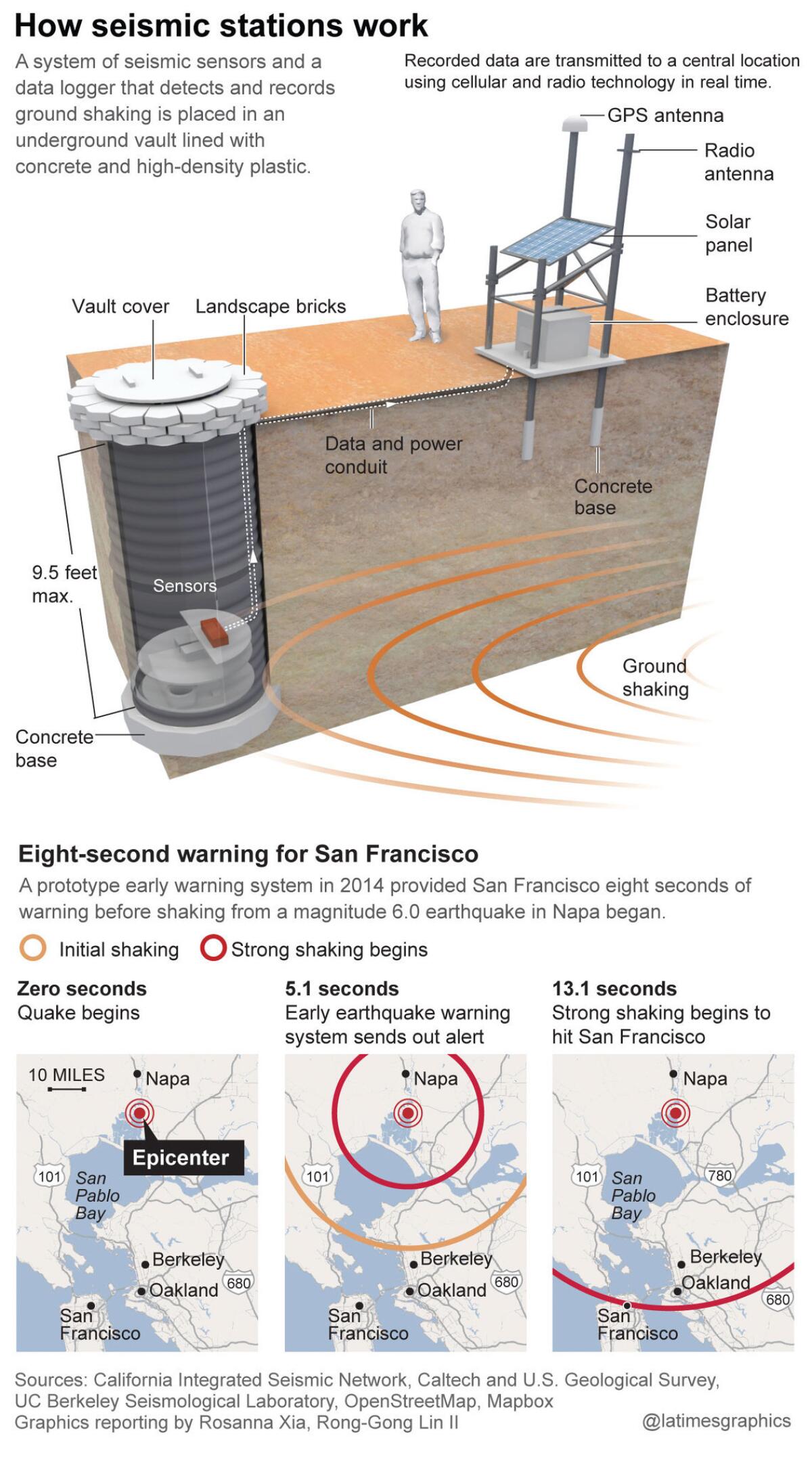
ALSO
Revenge of Y2K? A software bug might have caused false alert for big (and very old) earthquake
Californians need to be so afraid of a huge earthquake that they take action, scientists say
Sign up for Essential California
The most important California stories and recommendations in your inbox every morning.
You may occasionally receive promotional content from the Los Angeles Times.









